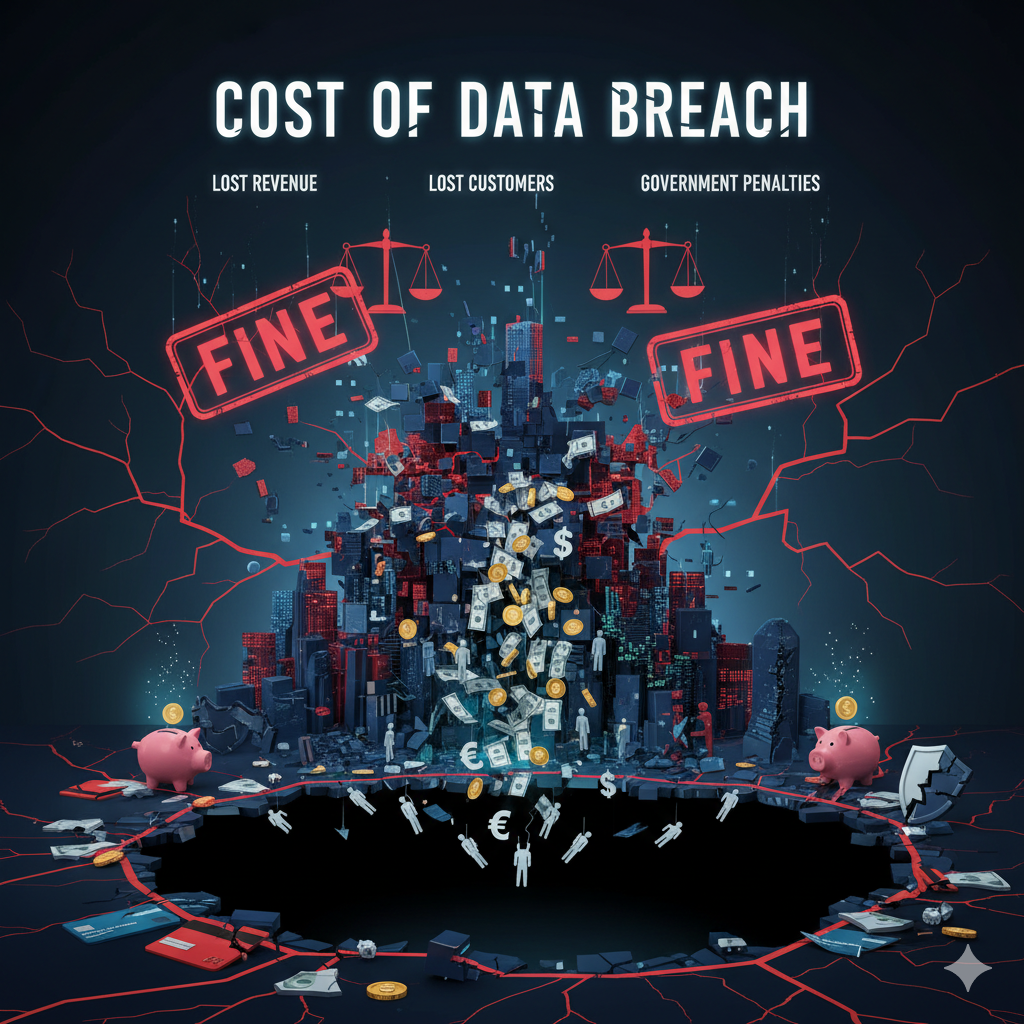In the late nineties, the business community had a problem: they were being inundated with fraud and financial scandals. Some of these scandals, like Enron and WorldCom, became particularly high profile and were drastically eroding investor confidence. In response to this turmoil, Congress passed the Sarbanes-Oxley Act on July 30, 2002. This law includes a number of stringent reforms to improve corporate governance and accountability, aimed at protecting investors from fraudulent financial reporting by corporations. The SOX Act applies to all publicly traded companies in the United States and any international companies that have registered equity or debt securities with the Securities and Exchange Commission (SEC).
For security engineers, DevOps engineers, and CISOs working with Java applications, ensuring SOX compliance can be a complex — if necessary — task. The Waratek Java Security platform includes a number of solutions to streamline this process, enhancing security measures and helping companies effortlessly maintain compliance. Let’s take a look at some of the key requirements of the Sarbanes-Oxley Act and how to easily achieve and maintain compliance with Waratek.
SOX Compliance is No Joke
The Securities and Exchange Commission (SEC) is responsible for enforcing SOX compliance. The Public Company Accounting Oversight Board (PCAOB), established by SOX, oversees the audits of public companies to protect investors and the public interest by promoting informative, accurate, and independent audit reports. The SEC and PCAOB have the authority to reprimand companies and individuals who fail to comply with SOX regulations.
Companies have received heavy penalties for failing to comply with the SOX act in the past. It’s not just the obvious consequences of negative press, a nosedive in investor and customer trust and the internal costs of remediating compromised systems. Operational disruptions affect market position and lead to increased scrutiny as companies are required to rectify deficiencies. The SEC also hands out hefty fines for any violations of SOX requirements that come across their radar.
For example, General Electric (GE) faced a $200 million fine in 2020 for misleading investors about its financial performance related to its insurance and power businesses. Similarly, Facebook was fined $100 million in 2019 for failing to disclose risks associated with the misuse of user data by Cambridge Analytica.
In some cases, executives working at these companies may even face personal liability and are convicted and imprisoned under the SOX Act. In 2002, Tyco International’s top executives were convicted of securities fraud for misleading investors about the company’s financial health.
Key IT Requirements of SOX
SOX compliance involves a whole host of regulations they must meet to avoid incurring penalties from the SEC. For a full list of these regulations, click here. Among these are certain key requirements that companies must meet to ensure the accuracy and integrity of their IT data and financial reporting. These include:
- Section 302: Corporate Responsibility for Financial Reports: Senior executives must certify the accuracy of financial statements and the effectiveness of internal controls.
- Section 404: Management Assessment of Internal Controls: Companies must establish and maintain an adequate internal control structure and procedures for financial reporting. This section requires an annual evaluation of the effectiveness of these controls.
- Section 409: Real-Time Issuer Disclosures: Companies must disclose any significant changes in financial condition or operations in a timely manner.
- Section 802: Criminal Penalties for Altering Documents: Imposes penalties for altering, destroying, or fabricating financial records and other documents.
How Waratek Helps Achieve SOX Compliance
Waratek offers a comprehensive solution to help companies achieve and maintain SOX compliance for all their Java applications. Here’s how Waratek addresses the requirements mentioned above.
Enhancing Internal Controls
SOX sections 302 and 404 require that publicly traded companies both establish and continue to prove effective internal controls on their financial information. This can be quite a burden on day-to-day operations when security personnel, analysts and engineers are constantly pulled away from their to-do lists to work on reports which demonstrate compliance.
Waratek’s Security-as-Code framework enables companies to establish immutable internal controls for their Java applications, eliminating a large amount of the manual labor required to make these reports. Waratek’s advanced security policies allow companies to fully ensure their applications adhere to strict access controls, data integrity checks, and secure coding practices. Security teams can create comprehensive access controls using cryptographic checksums and hashing techniques to detect any unauthorized changes to data.
Using this framework, your teams can ensure that only authorized users can interact with sensitive data and system components. Meanwhile, they have access to real-time monitoring and automatic enforcement of security policies to verify that data has not been altered or tampered with during processing or transmission.
Meanwhile, all these security policies are defined and enforced directly within the application’s runtime environment, meaning they require no downtime to implement or update. Waratek promotes secure coding practices by embedding security checks within the application lifecycle. This includes automated code analysis to identify and remediate vulnerabilities, adherence to best practices for secure development, and regular updates to address new security threats.
Real-Time Monitoring and Reporting
Waratek provides real-time monitoring capabilities that continuously track changes in application behavior, configurations, and data flows. This essentially automates away any compliance requirements regarding the regular checking and maintenance of controls. The platform tracks changes by monitoring system logs, network traffic, and application events to detect anomalies or suspicious activities that could indicate security incidents.
By employing advanced analytics and machine learning algorithms, Waratek can identify patterns and behaviors that deviate from the norm. We use this approach to proactively detect potential security threats before they can cause significant damage. This not only significantly reduces the risk of security incidents, but also provides detailed logs and audit trails when your annual evaluation rolls around.
Waratek generates detailed logs that capture every significant event within the application. These logs include metadata such as timestamps, user activities, and system changes, providing a comprehensive audit trail. Customizable reporting features allow security teams to generate real-time alerts and notifications, ensuring that critical issues are communicated promptly to stakeholders. The system facilitates the timely reporting of significant financial or operational changes, which is invaluable for compliance with SOX Section 409 requirements.
Protecting Financial Data
Section 802 of the SOX Act imposes criminal penalties for the unauthorized alteration or destruction of financial records. Waratek’s proprietary tainting engine plays a vital role in protecting financial data from such risks. The engine meticulously tracks the flow of untrusted data through the application, marking untrusted data and monitoring its interactions. The engine essentially babysits your data from point a to point b to ensure that if it comes from an unverified source, it is not able to affect other systems.
Every interaction involving untrusted data is monitored and controlled. This includes read/write operations, data transformations, and external communications. Unauthorized attempts to alter or delete financial records are detected and blocked.
The platform also provides detailed audit trails that document all these interactions. These trails are essential for forensic analysis and compliance verification, showing exactly how data was processed and by whom. The solution employs mechanisms to maintain the integrity of financial records. This includes ensuring that data is accurate, complete, and unaltered from its original state, preventing any changes that may result in a violation of SOX Section 802.
Simplifying Compliance Audits
Regardless of which regulations you are contending with, compliance audits can be resource-intensive and complex. Waratek simplifies this process by automatically generating comprehensive security reports. These reports are enriched with critical metadata such as control effectiveness metrics, vulnerability scores (e.g., CVSS scores), and compliance status indicators. This information provides security teams with a clear picture of the organization’s security posture and compliance efforts.
The reports themselves are customizable to meet specific audit requirements. Regardless of the level of detail you’re looking for, you’ll receive a bespoke write up backed by detailed logs and audit trails to serve as concrete evidence of your compliance efforts. Easily demonstrate to auditors how internal controls are implemented, monitored, and enforced, reducing the burden of compliance audits on your security team. By providing all necessary documentation and evidence in a structured format, Waratek reduces the time and resources required to prepare for compliance audits, allowing security teams to focus on other critical tasks.




